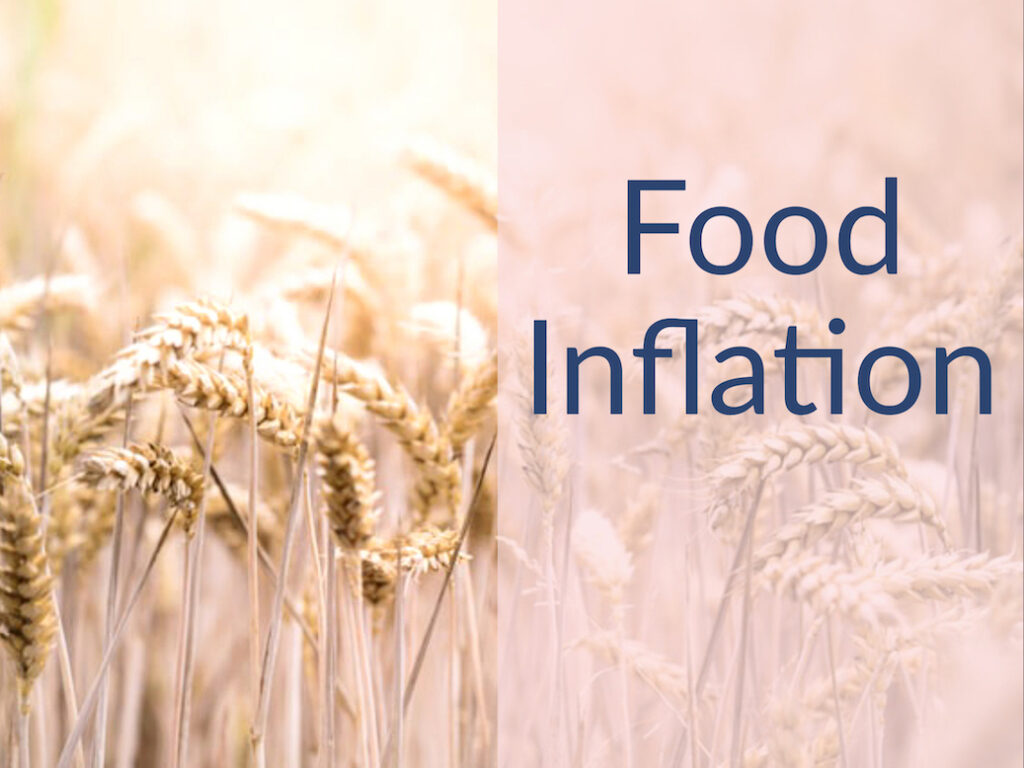Why food costs are soaring and what we can do about it. Why inflation rates could start to drop. Why commodity futures, including agriculture futures, have been lousy inflation hedges, and what has worked better.

Topics covered include:
- Previous investment recommendations by Money For the Rest of Us to combat inflation
- Why commodity futures hedge against unexpected inflation but have underperformed inflation over the long-term
- A recommended ETF for investing in commodity futures
- What is causing the jump in food prices and fertilizer
- Why the risk of food shortages is increasing and what are remedies to solve it
- Why agriculture price increases don’t always lead to higher food costs at the store
- Why inflation rates could slow in the coming months
Show Notes
Ukraine War Threatens to Cause a Global Food Crisis by Jack Nicas—The New York Times
Russia’s invasion of Ukraine is causing record-high food prices—The Economist
All That’s Stopping a Full-Blown Food Crisis? Rice by Javier Blas—The Washington Post
Packaged-food firms are running out of room to raise prices—The Economist
Prospective Plantings, March 31, 2022—USDA
Episode Sponsors
Composer automated trading platform
Related Episodes
232: Is It Time To Invest In Commodities?
309: Investments to Fight Financial Repression
312: What the Federal Reserve’s New Policies Mean For Your Finances
338: The National Debt, Inflation, and the U.S. Dollar—What Could Go Wrong?
342: Is Another Great Inflation Coming?
384: Has a Commodities Bull Market Supercycle Started? If So, How Do You Invest in It?
Transcript
Welcome to Money For the Rest of Us. This is a personal finance show on money, how it works, how to invest it, and how to live without worrying about it. I’m your host, David Stein. Today’s episode, 382. It’s titled “Is a famine next? Food and inflation, food riots, and commodities.”
Previous Discussions on Inflation
We’ve done a lot of episodes over the past few years on inflation and what to do about it, and what causes it. Occasionally, I like to go back and look at prior transcripts of older episodes to see what I said, to see if I was helpful to you in preparing for what has come.
Back in August 2020, I released episode 309, “Investments to fight financial repression.” At the time, the U.S. annual inflation rate as measured by the Consumer Price Index was 1.3%.
I shared a number of investments I had purchased in the previous six months to prepare for higher inflation; investments like Series I Savings Bonds, dividend-paying stocks, preferred stocks, which we then exited for the Money For the Rest of Us Model Portfolios in early January this year, before they fell over 10%.
I purchased the WisdomTree CBOE put-writing strategy ETF (PUTW). This is a strategy that takes advantage of the volatility risk premium. Something we discussed in-depth in episode 309, and you can check out.
A month later, in September 2020, I released episode 312, “What the Federal Reserve’s New Policies Mean For Your Finances.” The annual inflation rate at the time was 1.4%. I discussed how the Federal Reserve was going to allow inflation to run higher than their target, higher than 2%. And that they would be slower to raise interest rates.
One of the things we discussed in the episode, and what I was doing at the time was taking out a mortgage. Something that I hadn’t done in over a decade. Financial repression is when interest rates are held artificially low, and inflation is higher than what you can earn on cash.
And one way that you can take advantage of that is to use debt prudently. Because then, you’re paying back that debt with dollars that are worth less because of the higher inflation. And had you acted, not only then, but over the next year, mortgage rates were less than 3% in the U.S. Now they’re 5% or more.
Six months later, in March 2021, I released episode 336, “Own What is Real”. At the time, the Consumer Price Index was 2.6%. I said “We don’t know whether there will be a great inflation. The bond market is not pricing it in. We don’t know what’s going to happen in 2, 3, or 4 years, once we get over this pandemic, but prudent investors will own real things, physical things.”
I listed out some of those physical things—property, including real estate and land. But also stocks. Companies that own property, that invest in projects that make things, grow their earnings, dividend-paying stocks, rental real estate. And I mentioned gold and collectibles.
As a Money For the Rest of Us Plus member, you are able to listen to the podcast in an ad-free format and have access to the written transcript for each week’s episode. For listeners with hearing or other impairments that would like access to transcripts please send an email to jd@moneyfortherestofus.com Learn More About Plus Membership »
